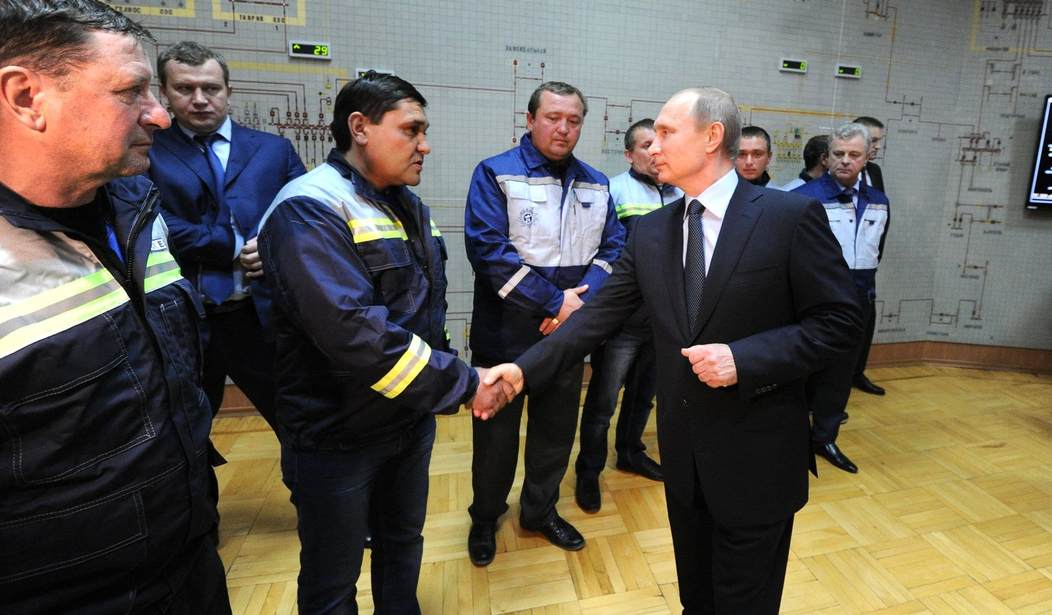While the world is distracted by the scourge of ISIS, Russia is upping the ante in Eastern Europe on the heels of its invasion of Ukraine.
Lt. Gen. Ben Hodges of Operation Atlantic Resolve, the United States’ “demonstration of continued U.S. commitment to the collective security of NATO” after Russian President Vladimir Putin’s seizure of Crimea, told reporters at the Pentagon today that Russia has placed “a significant amount of capability” in the Kaliningrad area on the Baltic coast.
“The most worrisome part is not just the fact that it sits between Poland and Lithuania — two of our allies — but it has the ability to deny access up into the Baltic Sea because of its anti-ship capability, air defense capability, electronic warfare capability as well,” Hodges said.
“And then, the — the way that senior Russian officials have talked about Denmark as a nuclear target, Sweden as a nuclear target, Romania as a nuclear target — sort of an irresponsible use of — of the ‘nuclear’ word, if you will. You can understand why our allies on the eastern flank of NATO — particularly in the Baltic region — are nervous, are uneasy. Large snap exercises without announcement, and so on — these put a lot of pressure on them.”
The general stressed that “really, Europe changed significantly with Russia’s invasion of Crimea.”
About 25,000 Russian soldiers now occupy the Crimean peninsula, with the amount of air defense and anti-ship capabilities that are there giving Moscow strong reach into the Black Sea. About a quarter of Georgia is still occupied by Russian forces. About 400 U.S. soldiers are near Lviv, Ukraine, right now helping train local forces.
“It’s hard to have confidence that the rebels or the Russians are complying with the Minsk II agreement,” Hodges noted.
He gave three reasons that Russia went into Syria: “to hang on to their foothold there, air base and seaport… before the Assad regime fell,” because “they felt they needed to demonstrate to their own domestic audience, as well as to the rest of us, that they’re a global power and that they have capabilities, too,” and so the Kremlin could “distract everybody’s attention away from what they were doing in Ukraine.”
Without the Organization for Security and Cooperation in Europe’s monitoring mission “able to do all that it’s supposed to be able to do,” the general said it’s hard to tell how much military might is in the restive areas of Ukraine with pro-Russia fighters.
“What they did do in Ukraine, before or at the conclusion of Minsk I, was a significant training effort of the rebels, a lot of combined arms training. There’s a lot of equipment there,” Hodges said, adding that what Ukrainian soldiers are facing “is not stuff that gets assembled in your mother’s basement. I mean, there’s high-end electronic warfare capability, rocket launchers, volumes of ammunition, tanks with reactive armor, and other protective capabilities.”
“…The Russian-backed rebels, they’re not just a road gang out there roaming around. I think the vast majority of what they’re doing is absolutely being controlled on a day-to-day basis.”
Part of the what the U.S. is having to do to keep up is “regenerate some linguist capability” by training more Russian speakers. Also, “you can’t just fly over Russia with the same kind of aircraft we use, say, for flying over places in the Middle East for collecting capability.”
“So, you know, we’re playing catch-up a little bit,” the general admitted. “You can feel that the entire intelligence community is moving out on this, but it does go to capacity and prioritization.”









Join the conversation as a VIP Member